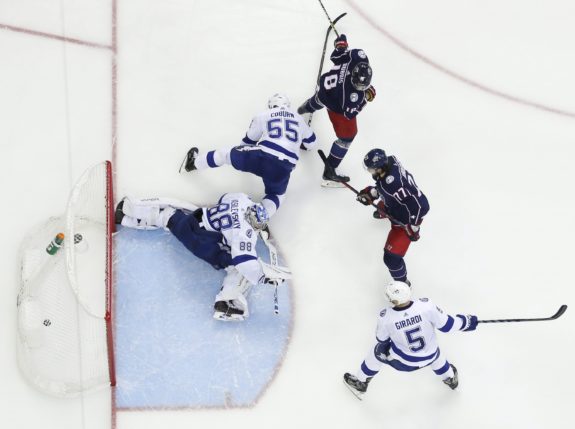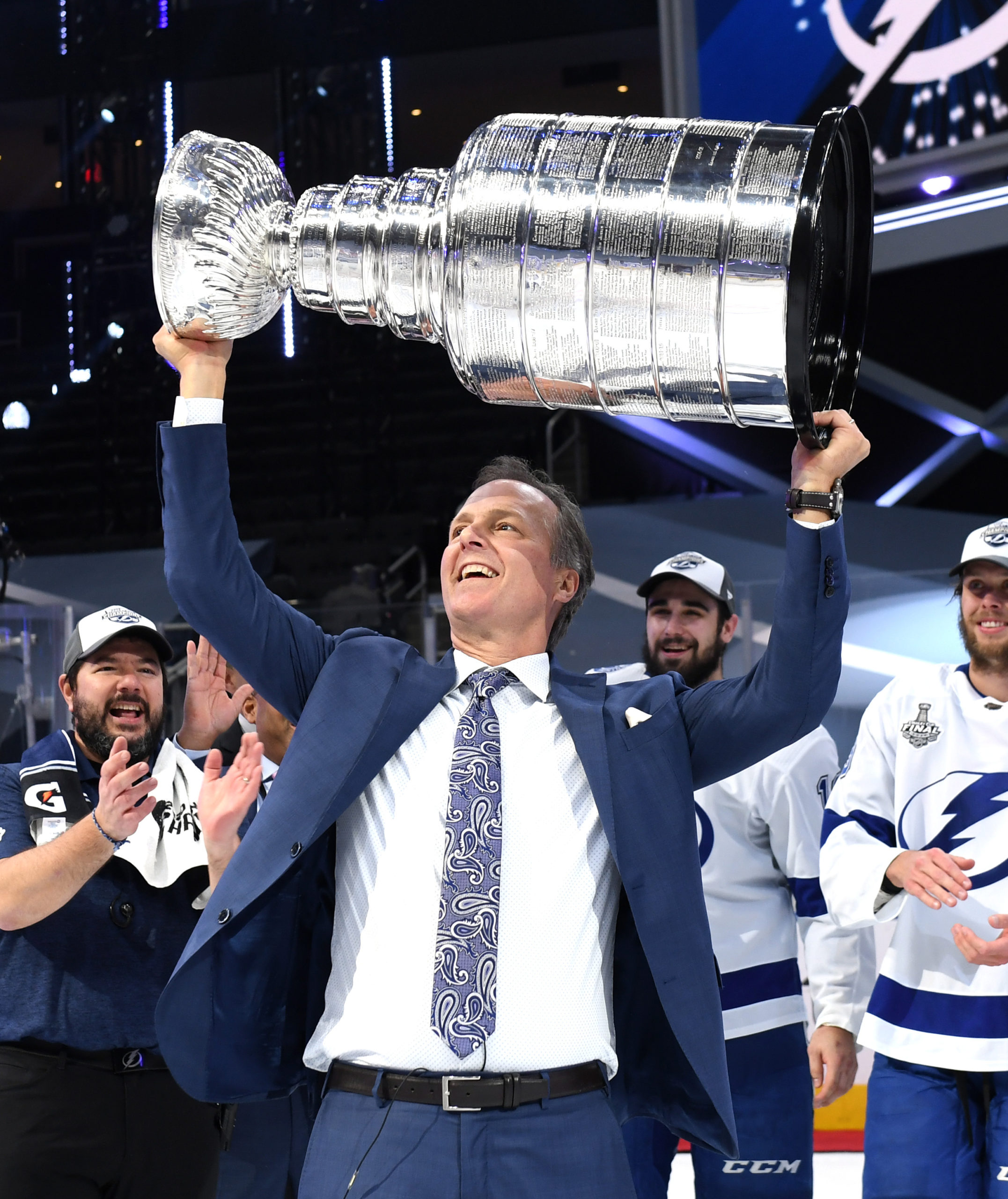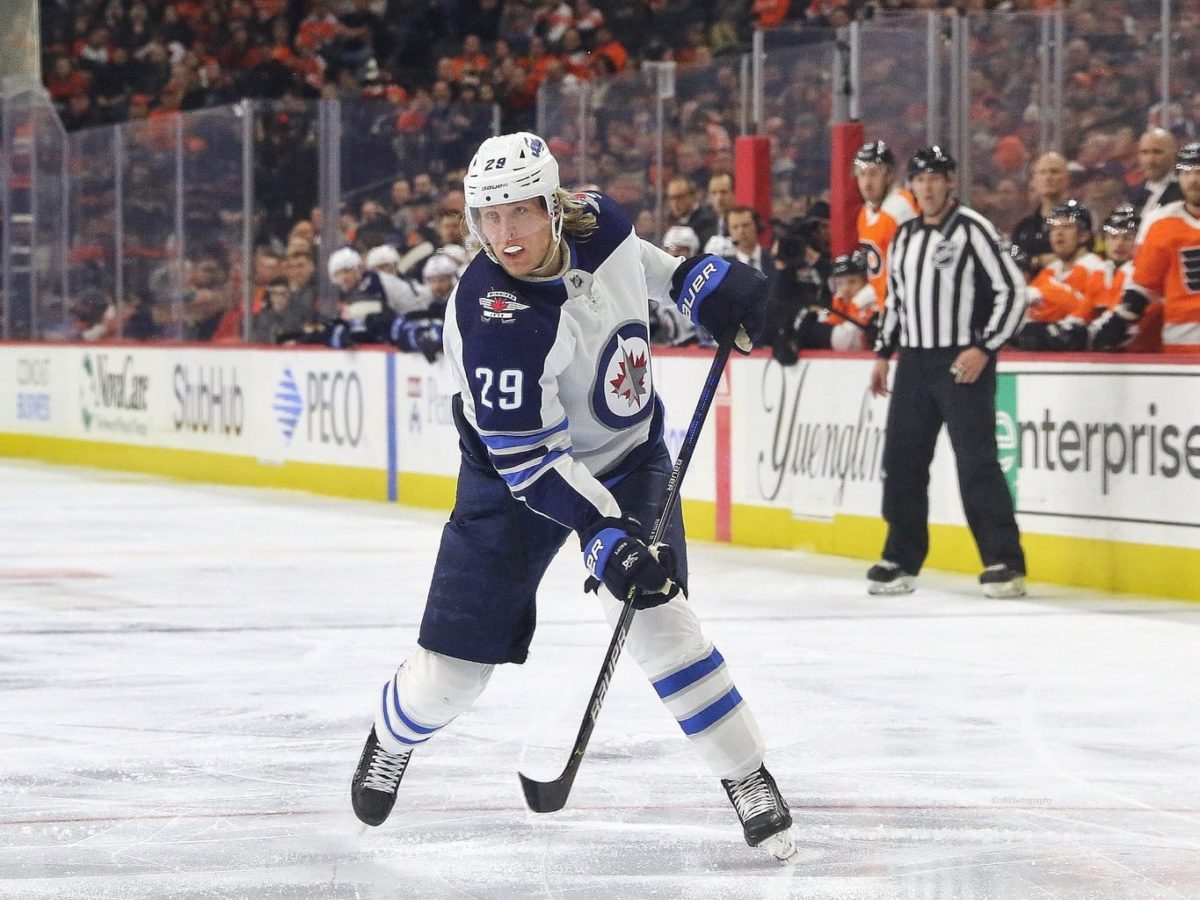The Tampa Bay Lightning have begun the young season pretty solidly, going 3-1 in the first four games. They currently sit fourth in this year’s makeshift Central Division. That said, the standings don’t really mean anything at the moment.
The Dallas Stars, the Florida Panthers and Carolina Hurricanes have only played three games. The Lightning have played in four, with the Nashville Predators having only played six games.
That leaves only three of the eight teams that have managed to play all seven scheduled games — the Detroit Red Wings, Chicago Blackhawks and Columbus Blue Jackets. Speaking of the Jackets, the Lightning just played a two-game set with Columbus, with each team taking a game, kind of like the last two seasons in the playoffs, with each taking a series. It seems these two franchises have seen quite a bit of each other lately.
Could these teams be considered rivals? Sports skirmishes are usually born out of a long history of conflict or the close geographical locations of the two teams. This “rivalry” has neither of those circumstances, but it does have a recent history of many intense games played between the two in a small amount of time.

The historical sweep by the Jackets over the Bolts in the first round of the 2018-19 NHL Playoffs was the first salvo of this hockey quarrel. That four-game debacle ruined the greatest regular season in Lightning history.
It also precipitated a change in the overall team philosophy for Tampa. That series shined a bright spotlight on the lack of grit on the Lightning’s roster. That offseason, the Bolts made notable changes, bringing in players Pat Maroon, Luke Schenn and then later trading for Blake Coleman.
As fate would have it, the two teams paired up again in the first round of the playoffs last season. The new Tampa players, known more for their toughness, helped make the difference in getting the Lightning past the Jackets.
Familiarity Breeds Discontent
Fast forward to this season, and the NHL brass had to temporarily realign the divisions due to Canadian COVID travel restrictions. With that came the news that Tampa and Columbus would be divisional opponents, facing off eight times over the truncated 56-game regular season.
This year’s playoff format involves the first two rounds being played against divisional opponents instead of the usual conference seeded matchups. This little wrinkle makes it pretty likely the two will meet for a third consecutive season.
But even if they do not happen to match up in this season’s playoffs, by season’s end, they will have played each other 23 times in the last three seasons. Two teams playing that much in such a short amount of time is a pretty good start to a budding rivalry.
Let’s not forget how the Red Wings and Colorado Avalanche became one of the best rivalries in the NHL in the mid-to-late ’90s and kept rolling into the early 2000s. Those two clubs had neither history or geography as a catalyst for the discord, just plenty of regular season and playoff meetings between them. The more they played, the more heated it got.
Tampa and Columbus Approach Winning Hockey Games Very Differently
Anyone who has watched these teams play each other knows how tightly contested the games are. The contrasting styles of the teams, both trying to impose their will on each other in different ways, make the games so much fun to watch.
It starts with the head coaches and their completely different coaching styles, with both producing great results. The evidence being that Lightning head coach Jon Cooper and Columbus’ head coach John Tortorella have each hoisted the Stanley Cup for the Lightning.
Cooper’s editions of the Lightning have emphasized speed and skill, and with the players he has on the roster, it’s tough to argue with that philosophy. Skill players like Steven Stamkos, Nikita Kucherov and Brayden Point have all flourished under Cooper.

Credit Cooper’s stern but fair approach as a huge reason his players love playing for him. Case in point, Tyler Johnson struggled with ice time after falling out of favor a season ago. Then the team tried to move him in the off-season to make room under the salary cap. Nonetheless, when push came to shove, Johnson still preferred to stay and play for Cooper even after the team placed him on waivers twice.
Conversely, Tortorella’s fiery approach can grate on certain players. Just this past week, now former No. 1 center Pierre-Luc Dubois asked for and was granted a trade. Wide speculation indicates it was because of Tortorella. Whisperings had former No. 1 goalie Sergei Bobrovsky, who had left last year, leaving for the same reason. On the flip side, players like captain Nick Foligno and defenseman Seth Jones have praised Tortorella’s “tell it like it is” approach.
Playing for Columbus is not for everyone; some players just aren’t built for this type of grind. The “Tortorella” system emphasizes a heavy forecheck and physical play. The Blue Jackets figure that an opponent can only take so much punishment before they eventually break down and give in.
This worked like a charm against the Lightning in the first playoff meeting between them, but not so much the second time around. Going through it the first time, however, may have propelled the Lightning to finally win it all again. Many in the hockey world feel that the Lightning might not have won the Cup last year had they not gone through what Columbus did to them the previous season.
Blue Jackets May Have the Upper Hand Post-Trade
When the Blue Jackets had no choice but to trade Dubois, speculation was rampant on what they could expect to get back. All things considered, Columbus did about as well as one could hope. Dubois and a third-round pick in 2022 were dealt to the Winnipeg Jets for star forward Patrik Laine and Columbus native Jack Roslovic.
The deal gives the Jackets the go-to scorer they haven’t had since Artemi Panarin was lured away to the New York Rangers in July of 2019. In Panarin, Columbus lost their best finisher and a player that gave Tampa fits in the 2018-19 first-round series. In last year’s rematch, without Panarin, the Blue Jackets could never get the big goal to win it in either of the OT games in the series. If Laine fills the scoring void, that could be bad news for the Lightning.

In his 306 games played, Laine has racked up an impressive 250 points on 140 goals to go with 110 assists. Compare those numbers to Dubois, and Laine comes out on top. Dubois has played in 239 games, garnering 159 points on 66 goals and 93 assists. In fairness to Dubois, he is a very valuable player, just not in the same way.
Nikita Kucherov, Tampa’s best offensive player, is out for the season. With all due respect to Stamkos, Kucherov is the real team leader, especially in the playoffs. Point rose up to complement Kucherov in the bubble, but wasn’t the main focus of opposing teams like he’ll be this season.
Last season the Bolts won in five games, but it took almost seven full games worth of hockey to do it. The first game went into the fifth OT before the Bolts finally prevailed. The final game was also an OT affair, with the other games one-goal nail biters, except for Game 2, which was a two-goal victory for Columbus. If these teams do lock horns in another playoff series this season, the addition of Laine could give Columbus the advantage.
Regardless of who has the upper hand, any hockey fan should be praying for a third straight playoff meeting involving these two teams. Not only because it will almost certainly be a great series, but it could be the cement in the foundation in building a longstanding feud.
Currently, neither team has a true rival in the traditional sense. That’s where this season comes in. The Jackets and Lightning currently have six more games against each other in the regular season. If the two teams meet up in the playoffs for a third straight season, then most would have to classify this as a real, tried and true NHL rivalry.